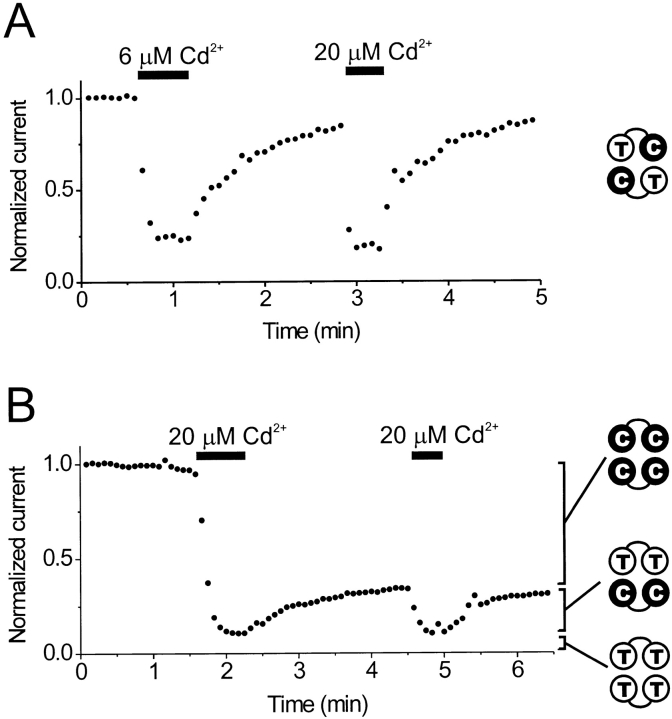Figure 4.
Cd2+ inhibition is reversible in channels containing only two cysteines at position 464. (A) Reversible Cd2+ inhibition in channels composed of TC tandem-linked subunit dimers (results). The TC/TC channels were ∼80% inhibited in 6 μM Cd2+, and the current recovered to near control levels in ∼2 min. The channels were ∼86% inhibited during a subsequent application of 20 μM Cd2+. (B) Cd2+ inhibition in patches containing a mixture of channels composed of TT and CC dimers (results). In this experiment, the initial application of 20 μM Cd2+ inhibited ∼90% of the current (CC/CC + TT/CC channels). Upon removal of Cd2+, ∼25% of the current recovered in ∼2 min (TT/CC channels). 65% of the current was blocked irreversibly (CC/CC channels). The recovered 25% could again be reversibly blocked by a subsequent application of 20 μM Cd2+. The remaining 10% of the current was unaffected by Cd2+ (mostly TT/TT channels). For both A and B, channels were held at +10 mV, and current was monitored using 400-ms test pulses to −110 mV (closed circles). Linear leak current was subtracted, and currents were normalized to the mean pre-Cd2+ control level.

